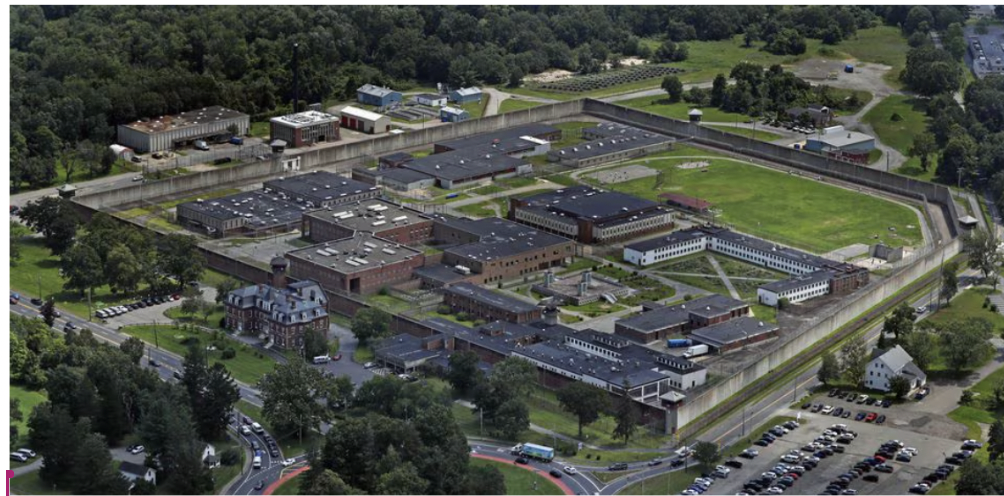The impending closure of MCI (Massachusetts Correctional Institution)-Concord in June has stirred anticipation and excitement among many residents, who see it as an opportunity for new ventures to take root in the vacant spot. For nearly 150 years, this prison has loomed large in the town’s landscape, shaping the penal system in Massachusetts, but in 2024, the town decided to leave it decommissioned with the plan to transfer inmates by June 30, 2024. While there has been talk about converting the space into affordable housing, or creating a community center, such as a playground or cafe, plans have yet to be finalized as to what will be there next.
Since its establishment in 1878, the prison has been a symbol of both oppression and justice in the legal system. Unbeknownst to many, it is actually the oldest running men’s prison in Massachusetts, and has even housed several influential individuals in later years, too. In 1878, Massachusetts budgeted one million dollars in order to open this new prison in order to relieve some of the pressures that the overcrowded prison in Charleston was feeling, as it was running well over its capacity. Violence and illnesses often broke out between the inmates, and the prison did not have the resources nor funds to control the uprising issues. Concord soon decided to throw its hat in the ring, shouldering the responsibility of holding a correctional facility in its bounds. The conditions could often be considered quite grim: with some men being held in solitary confinement in the basement, escape-proof and depressing, given that the windows were bricked in. Unfortunately, there were reports at different points throughout the history of this prison that men had been beaten, verbally abused, and thrown in solitary confinement arbitrarily by correctional officers. Additionally, because of the unsanitary conditions, many prisoners were victim to the Spanish Flu Epidemic, and countless others died from other unknown transmittable illnesses.
While modern times have brought about better conditions for the inmates, the harsh conditions of the past have not gone unnoticed, with multiple riots ensuring over the course of its existence in protest. The first of such riots occurred in early July of 1882. Prisoners caused a disturbance by banging on their doors and yelling for hours on end, until the warden punished them by taking away their yard time. This only escalated the violence and caused the inmates to destroy property, with further disturbances occurring over the next three days. Almost 80 years following, a mass escape riot attempt occurred in April of 1959. A special riot squad was called in from the Massachusetts state police, quelling the escape attempt by 59 convicts at Concord Reformatory, rescuing 13 guards and two civilians who had been held as hostages. In the 1970’s, two riots also occurred. In 1972, inmates began rioting and causing a major disturbance. Correction officers requested assistance and seventy-five state police officers were sent to the Concord Reformatory to shut down the uprising. Again, in 1976, 80 inmates caused $1 million worth of damage to three buildings during a four hour riot that ended when the inmates voluntarily surrendered.
The reformatory is no stranger to fame, either, housing multiple well-known inmates, too. In January 1946, Malcolm Little (Malcolm X) was trying to retrieve a 1,000 dollar stolen watch from a pawnshop, but was caught and charged with grand larceny. X was sentenced to eight to ten years behind bars. At the age of 20, he was initially sent to Charlestown, Massachusetts, and assigned prisoner number 22843. In 1947, X was then transferred to the Concord Reformatory. Though he may have only had an education through eighth grade, he took time at the reformatory to educate himself through the library and participated in courses like English and Latin. During his stay at the Reformatory, his sister was inspired by his dedication to academics in prison and began a letter writing campaign to get him transferred to Norfolk Prison Colony, which was known for its education programs for inmates. This campaign was successful, and he was transferred after 15 months from the Reformatory to Norfolk in 1948, later being released on Parole in 1952.

Other well known names have been housed in the reformatory as well. John Geoghan, a figurehead in the Catholic Church Sexual Abuse cases of the 1990’s and 2000’s, was also imprisoned at MCI Concord. He had been sent to prison for sexually abusing over 130 people, mainly adolescent males, in the span of about three decades. In 1998, Geoghan was ousted as priest after the church reportedly paid millions of dollars to settle sex abuse claims. In 1999, he is finally indicted for sexual abuse and rape, and is finally sent to prison for a sentence of 10 years in January, 2002. It was reported that he was abused by guards and other prisoners, often called “Satan” or “Lucifer” in mocking while in prison. Some reports have also stated that correctional officers would physically abuse Geoghan, and there were rumors of defecation in his cell by fellow inmates and officers alike. Due to the toxic treatment of Geoghan, he was allowed to transfer to the Souza Baranowski Correctional Center in Shirley, Massachusetts in 2003. In August of that same year, he was attacked by an inmate serving a life sentence.
With the impending closure drawing nearer, June will mark the end of MCI-Concord’s 150 years of history here in Concord. While its presence may have felt like a long shadow casted over the town, its closure stirs a mix of emotions among residents, signaling both an end and a new beginning. The correctional facility lying in town center serves as a symbol of justice, but also the stark realities of incarceration and a history of pain. With its closing, residents can reclaim this space for themselves, making it a place more suited for a quiet town like Concord. As the community bids farewell to the prison, it is important to remember the past as well as anticipate the hopeful possibilities that could be in store for this space of sadness. Let this closure not feel like an end, but a beginning to a new and better chapter in the complex history of Concord, Massachusetts.
SOURCES:
https://www.cnn.com/2003/US/08/23/geoghan.chronology/
https://www.mass.gov/locations/mci-concord
https://statesofincarceration.org/story/malcolm-x-norfolk-debating-society
https://en.wikipedia.org/wiki/John_Geoghan
https://en.wikipedia.org/wiki/Massachusetts_Correctional_Institution_%E2%80%93_Concord
https://www.wbur.org/news/2024/01/24/massachusetts-mci-concord-mens-prison
https://concordma.gov/3514/MCI-Concord-Closure








































